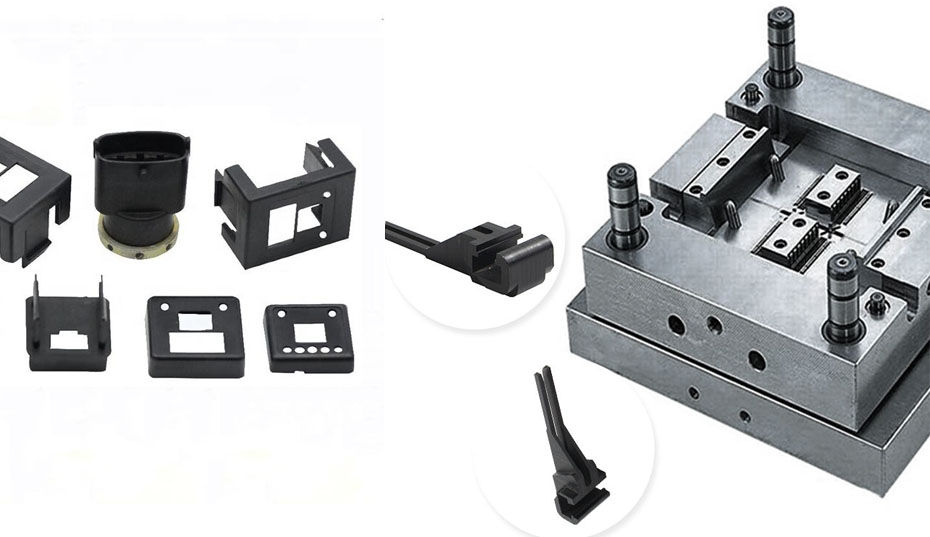
Welcome to the wonderful world of plastic cap injection molding! Injection molding is a process used to manufacture custom parts and components in a variety of materials, including plastic. Plastic cap injection molding offers a range of benefits and is a cost-effective solution for many industries. In this article, we'll explore what plastic cap injection molding is, the benefits it offers, the types of plastic used in the process, the steps involved, design considerations, types of injection molding machines, the importance of choosing the right mold material, the benefits of using a secondary process, and troubleshooting the process.
What is plastic cap injection molding?
Plastic cap injection molding is the process of creating custom plastic parts or components for a variety of applications. The process involves melting down plastic pellets or granules and injecting them into a cavity or mold, where they cool and solidify into a desired shape. The process is fast and efficient and can produce parts in a variety of sizes and shapes. It's also a cost-effective way to create customized parts and components.
The benefits of plastic cap injection molding
Plastic cap injection molding offers a number of advantages over other manufacturing processes. It's fast and efficient, allowing for the production of parts in high volumes with a low lead time. It's also highly accurate, producing parts that are consistent in size and shape. The process is also flexible, allowing for the production of a wide range of parts and components. Finally, it's cost-effective, as the cost of the raw materials is relatively low and the cost of the injection molding machine is often recovered over time.
Types of plastic used for plastic cap injection molding
The type of plastic used for the injection molding process depends on the desired application. Common plastics used for injection molding include polyethylene, polypropylene, polystyrene, and polycarbonate. Each of these plastics has its own unique properties and can be used to create parts and components with a variety of characteristics and properties.
What are the steps of the plastic cap injection molding process?
The plastic cap injection molding process typically consists of five steps. The first step is to prepare the plastic pellets or granules by melting them down. The second step is to inject the melted plastic into the mold cavity. The third step is to cool the plastic in the mold cavity until it solidifies. The fourth step is to open the mold and remove the part. The fifth and final step is to finish the part, which may involve trimming, painting, or similar processes.
Design considerations for plastic cap injection molding
When designing a part or component for plastic cap injection molding, there are several considerations to keep in mind. These include the part's size and shape, the type of plastic being used, the part's wall thickness, and the part's tolerance. Additionally, the design should take into account the type of injection molding machine being used and the type of mold that will be used.
Types of injection molding machines
There are a variety of injection molding machines available, each designed for a specific purpose. The most common type of injection molding machine is the hydraulic press, which is capable of producing high-quality parts with a high degree of accuracy and repeatability. There are also electric injection molding machines, which offer a higher degree of control and precision, but are more expensive than hydraulic presses.
The importance of choosing the right mold material
When choosing a mold for plastic cap injection molding, it's important to choose the right material. Common materials used for injection molds include aluminum, steel, and polyurethane. Each type of mold material has its own unique properties, so it's important to choose a material that is best suited for the desired application.
The benefits of using a secondary process
In addition to the injection molding process itself, a secondary process can be used to enhance the finished part or component. This secondary process can include painting, trimming, and other operations to further customize the part to meet the customer's needs. This secondary process can also provide additional cost savings by reducing the need for manual labor.
Troubleshooting the plastic cap injection molding process
Injection molding can be a complex process and there are a number of potential issues that can arise. Common issues include insufficient material flow, insufficient cooling, and improper part ejection. It's important to identify the root cause of any issues and take steps to address them in order to produce a high-quality part.
Conclusion
The process of plastic cap injection molding offers a number of advantages over other manufacturing processes. It's fast and efficient, cost-effective, and can produce parts in a variety of sizes and shapes. Additionally, it's important to consider the type of plastic being used, the injection molding machine, the mold material, and the secondary process for further customization. With the right knowledge and techniques, plastic cap injection molding can be used to produce high-quality parts and components.





